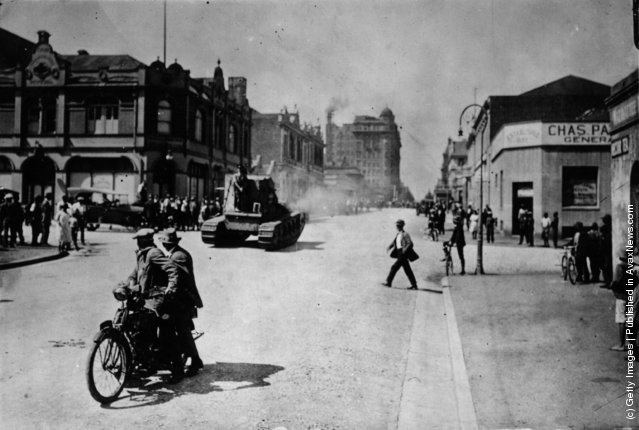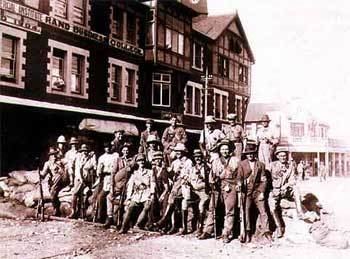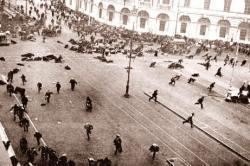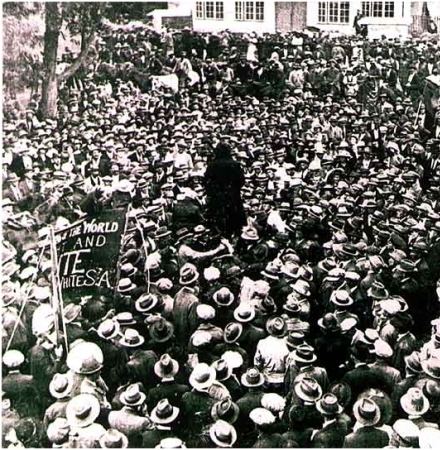 | ||
Period 28 December 1921 – March 1922 Results Rebellion suppressed, Political backlash against Smuts Similar 1994 Bophuthatswana crisis, Invasion of the Cape Colony, Church Street bombing, Battle of Blaauwberg, Maritz rebellion | ||
The Rand Rebellion (or Rand Revolt, or Second Rand Revolt) was an armed uprising of white miners in the Witwatersrand region of South Africa, in March 1922. Jimmy Green, a prominent politician in the Labour Party, was one of the leaders of the strike. Following a drop in the world price of gold from 130 shillings (£6 10s) a fine troy ounce in 1919 to 95s/oz (£4 15s) in December 1921, the companies tried to cut their operating costs by decreasing wages, and by weakening the colour bar to enable the promotion of cheaper black miners to skilled and supervisory positions.

The rebellion started as a strike by white mineworkers on 28 December 1921 and shortly thereafter, it became an open rebellion against the state. Subsequently the workers, who had armed themselves, took over the cities of Benoni and Brakpan, and the Johannesburg suburbs of Fordsburg and Jeppe.
The young Communist Party of South Africa (CPSA) took an active part in the uprising on grounds of class struggle while opposing racist aspects of the strike, as did the syndicalists.The racist aspect was typified by the slogan; "Workers of the world, unite and fight for a white South Africa!" and by several pogroms against blacks.

Several communists and syndicalists, the latter including the strike leaders Percy Fisher and Harry Spendiff, were killed as the rebellion was quelled by state forces. The rebellion was eventually crushed by "considerable military firepower and at the cost of over 200 lives".

Prime Minister Jan Smuts crushed the rebellion with 20,000 troops, artillery, tanks, and bomber aircraft. By this time the rebels had dug trenches across Fordsburg Square and the air force tried to bomb but missed and hit a local church. However the army's bombardment finally overran them.

Smuts caused a political backlash and he lost the following elections in 1924 to a coalition of the National and Labour parties. They introduced the Industrial Conciliation Act 1924, Wage Act 1925 and Mines and Works Amendment Act 1926, which recognised white trade unions and reinforced the colour bar. Under instruction from the Comintern, the CPSA reversed its attitude toward the white working class and adopted a new 'Native Republic' policy.
